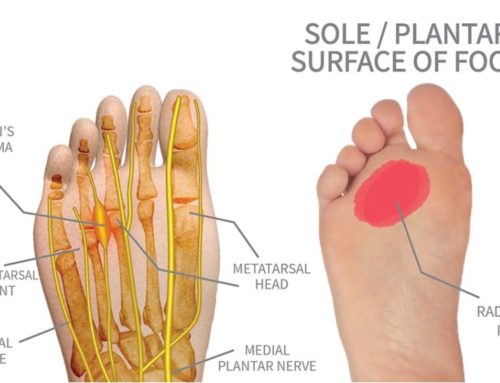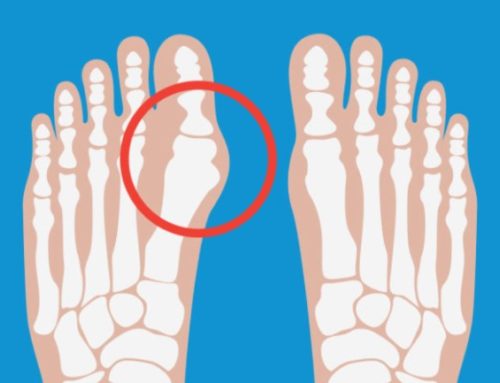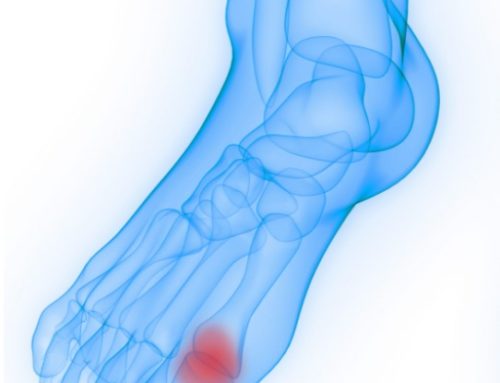A hammertoe is a deformity of the toe that causes it to contract or bend upward in a fixed position instead of lying flat on the ground. This deformity can range in severity and is often associated with pain, particularly pressure from shoes.
Each lesser toe has three joints. The great toe has two joints. Hammer toes are caused by a tendon imbalance in the toe. Tendons connect muscles to bone and each toe has a set of tendons that allows the toe to flex or extend as needed during ambulation. If there is abnormal pull on the tendons, they can become stiff, short or inflexible causing the toe to take on a rigid position.
There are three types of hammertoes. The traditional hammertoe is contracted at the middle joint of the lesser toes. A claw toe is contracted at both the middle and distal (furthest away) joints of the toe. A mallet toe is contracted at only the furthermost joint.
Hammertoes can be hereditary, related to arthritis or they can develop over time as a result of activity and shoe gear. They are most commonly seen in a higher arched foot or a foot with a bunion that places pressure on the second toe. Hammertoes are also more often seen in diabetics. Over time the disease process can have effects on the small muscles of the feet causing a tendon imbalance of the toes.
Symptoms of a hammertoe are a rigid or inflexible toe that causes pain in the toes and difficulty moving the toes. Often, shoe gear can rub on the prominent toe and cause blisters, wounds or corns and calluses to form.
Conservative treatment for mild hammertoes includes exercises that target the small muscles of the feet. Proper footwear that includes a low heel and a wide deep toe box. A custom insole to support and correct any biomechanical abnormalities of the feet. Padding and taping measures to help avoid pressure and rubbing on the digits.
If conservative measures fail and the digit is in a rigid painful position, surgical intervention may be recommended. Different types of hammertoes will require different procedures or combinations of procedures.
An arthroplasty is a procedure where part of the bone is removed at the contracted joint. An arthrodesis is similar to an arthroplasty, but it involves surgically stiffening the toe with a pin. Tendon transfers may be utilized to strengthen or straighten the toes as well. Osteotomies are cuts in the bones behind the toes to assist in positioning of the toes. Occasionally ligaments and fibrous structures surrounding the toe must be repaired to give the toe support and stability.
If you have any questions or concerns, please call Quality Foot Care at 215-230-9707 for a comprehensive examination and expert treatment.




Leave A Comment